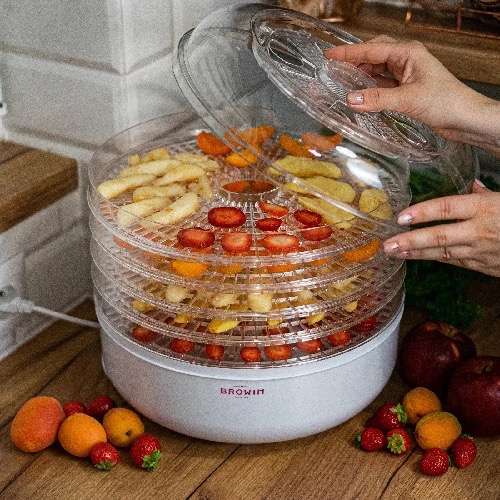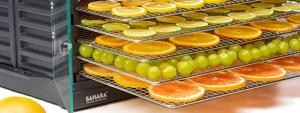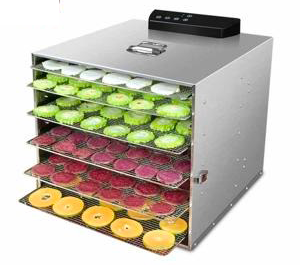
Content Menu
● Introduction
● Understanding Heat Pump Dryers
>> How Heat Pump Dryers Work
>> Advantages of Heat Pump Technology
● Benefits of Heat Pump Dryers
>> 1. Energy Efficiency
>> 2. Quality Preservation
>> 3. Environmentally Friendly
>> 4. Versatility
>> 5. Reduced Operating Costs
● Key Features to Consider
>> 1. Capacity
>> 2. Temperature Control
>> 3. Energy Rating
>> 4. Build Quality
>> 5. Maintenance Requirements
● Comparing Heat Pump Dryers to Traditional Drying Methods
● Choosing the Right Heat Pump Dryer
● Installation Considerations
>> Space Requirements
>> Ventilation Needs
>> Electrical Requirements
● Maintenance Tips for Longevity
● Conclusion
● Related Questions
>> 1. What types of food can be dried using a heat pump dryer?
>> 2. How does energy consumption compare between heat pump dryers and traditional dryers?
>> 3. What is the average lifespan of a heat pump dryer?
>> 4. Are there any government incentives for purchasing energy-efficient appliances like heat pump dryers?
>> 5. How do I maintain my heat pump dryer?
Introduction
In recent years, the demand for efficient and sustainable food drying solutions has surged, particularly in the United States. As a leading manufacturer of food drying machines in China, we provide OEM services to international brands, wholesalers, and producers. This article will explore essential considerations when purchasing a heat pump dryer in the US, focusing on its benefits, features, and how it compares to traditional drying methods.

Understanding Heat Pump Dryers
Heat pump dryers are innovative appliances that utilize advanced technology to dry food products efficiently. Unlike conventional dryers that expel hot air, heat pump dryers recycle air within the system, making them more energy-efficient and environmentally friendly. This method not only reduces energy consumption but also preserves the quality of food products.
How Heat Pump Dryers Work
Heat pump dryers operate by extracting moisture from food items using a heat exchange system. The process involves several key components:
- Evaporator: Absorbs heat from the surrounding air and evaporates refrigerant.
- Compressor: Increases the pressure of the refrigerant gas, raising its temperature.
- Condenser: Releases heat back into the drying chamber while condensing the refrigerant back into a liquid.
- Expansion Valve: Lowers the pressure of the refrigerant, allowing it to return to the evaporator.
This closed-loop system ensures that heat is recycled, making heat pump dryers highly efficient.
Advantages of Heat Pump Technology
The technology behind heat pump dryers offers several advantages over traditional drying methods:
- Lower Operating Temperatures: Heat pump dryers operate at lower temperatures than conventional dryers. This capability helps prevent damage to sensitive foods and ensures that flavors and nutrients are retained during the drying process.
- Moisture Control: By controlling humidity levels within the dryer, heat pump dryers can achieve optimal drying conditions for various food types. This feature is particularly beneficial for businesses that require precise moisture content in their products.
- Reduced Carbon Footprint: With growing awareness of environmental issues, businesses are increasingly looking for ways to reduce their carbon footprint. Heat pump dryers contribute to this goal by consuming less energy and producing fewer emissions compared to traditional drying methods.
Benefits of Heat Pump Dryers
1. Energy Efficiency
One of the primary advantages of heat pump dryers is their energy efficiency. They consume significantly less energy compared to traditional electric or gas dryers. This efficiency translates into lower utility bills for users.
2. Quality Preservation
Heat pump dryers operate at lower temperatures than conventional dryers, which helps preserve the nutritional value, flavor, and color of dried foods. This is particularly important for businesses focused on maintaining high-quality products.
3. Environmentally Friendly
By using less energy and reducing greenhouse gas emissions, heat pump dryers are an environmentally friendly choice for food processing companies. This aligns with growing consumer demand for sustainable practices.
4. Versatility
Heat pump dryers can handle a wide variety of food products, including fruits, vegetables, meats, and herbs. Their adjustable settings allow users to customize drying times and temperatures based on specific product requirements.
5. Reduced Operating Costs
Though the initial investment in a heat pump dryer may be higher than traditional models, the long-term savings on energy bills and maintenance costs make them a financially sound choice for businesses.
Key Features to Consider
When considering purchasing a heat pump dryer in the US, several features should be evaluated:
1. Capacity
The capacity of a heat pump dryer is crucial for determining how much product can be dried at once. Businesses should assess their production needs to select an appropriately sized machine. For instance, a small-scale operation may only require a unit with a capacity of 50-100 kg per batch, while larger manufacturers might need machines capable of handling several hundred kilograms at once.
2. Temperature Control
Look for models with precise temperature control settings that allow for optimal drying conditions tailored to different types of food products. Some advanced models offer programmable settings that can be adjusted based on specific requirements for various foods.
3. Energy Rating
Check for energy efficiency ratings when selecting a heat pump dryer. Higher ratings indicate better performance and lower operational costs. Many manufacturers provide detailed specifications regarding energy consumption per cycle or per kilogram of product dried.
4. Build Quality
Durability is essential in a commercial setting. Choose machines made from high-quality materials that can withstand frequent use. Stainless steel components are often preferred due to their resistance to corrosion and ease of cleaning.
5. Maintenance Requirements
Consider machines that offer easy maintenance features such as removable filters and accessible components for cleaning. Regular maintenance is crucial for ensuring longevity and optimal performance.
Comparing Heat Pump Dryers to Traditional Drying Methods
| Feature | Heat Pump Dryer | Traditional Dryer |
|-----------------------------|--------------------------------|--------------------------------|
| Energy Consumption | Low | High |
| Drying Temperature | Low (preserves quality) | High (can damage quality) |
| Environmental Impact | Eco-friendly | Higher emissions |
| Versatility | High (variety of foods) | Limited |
| Initial Cost | Higher | Lower |
Choosing the Right Heat Pump Dryer
Selecting the right heat pump dryer involves understanding your specific needs and evaluating various models available in the market. Here are some steps to guide your decision:
1. Assess Your Production Needs: Determine how much product you need to dry daily or weekly.
2. Research Brands: Look for reputable brands known for producing reliable heat pump dryers.
3. Read Reviews: Customer feedback can provide insights into performance and reliability.
4. Consult Experts: Engage with suppliers or manufacturers who can offer guidance based on your requirements.
5. Request Demonstrations: If possible, see the machine in action before making a purchase.
Installation Considerations
When purchasing a heat pump dryer, installation is another critical factor that should not be overlooked:
Space Requirements
Ensure you have adequate space for installation as heat pump dryers often require sufficient clearance around them for proper airflow and maintenance access.
Ventilation Needs
While many heat pump dryers do not require external venting like traditional models, they still need proper ventilation within the room where they are installed to maintain optimal performance.

Electrical Requirements
Check the electrical specifications of the dryer and ensure your facility can accommodate its power needs without overloading existing circuits.
Maintenance Tips for Longevity
To maximize the lifespan and efficiency of your heat pump dryer, consider implementing these maintenance tips:
- Regular Cleaning: Frequently clean filters and condensate trays to prevent blockages that can hinder performance.
- Inspect Seals: Regularly check door seals and gaskets for wear or damage to maintain energy efficiency.
- Monitor Performance: Keep an eye on drying times and product quality; significant changes may indicate maintenance needs.
- Professional Servicing: Schedule routine professional servicing to ensure all components are functioning optimally.
Conclusion
Investing in a heat pump dryer is a strategic decision for businesses looking to enhance their food processing capabilities while minimizing environmental impact and operational costs. By considering factors such as capacity, energy efficiency, build quality, installation needs, and maintenance requirements, companies can select a model that meets their specific needs.
As demand for sustainable food processing solutions continues to grow in the US market, heat pump dryers stand out as an innovative choice that aligns with both consumer preferences and business goals.

Related Questions
1. What types of food can be dried using a heat pump dryer?
Heat pump dryers can effectively dry various foods including fruits, vegetables, meats, herbs, and even flowers due to their adjustable settings.
2. How does energy consumption compare between heat pump dryers and traditional dryers?
Heat pump dryers consume significantly less energy than traditional dryers because they recycle hot air within their system instead of expelling it.
3. What is the average lifespan of a heat pump dryer?
The average lifespan of a well-maintained heat pump dryer is typically between 10 to 15 years depending on usage and care.
4. Are there any government incentives for purchasing energy-efficient appliances like heat pump dryers?
Yes, many states offer rebates or tax incentives for businesses that invest in energy-efficient appliances including heat pump dryers.
5. How do I maintain my heat pump dryer?
Regular maintenance includes cleaning filters, checking seals for leaks, and ensuring proper ventilation around the unit to maintain optimal performance.
By understanding these aspects of heat pump dryers and considering your specific business needs when selecting one, you will be well-equipped to make an informed decision that enhances your operations while supporting sustainability initiatives in your food processing endeavors.












